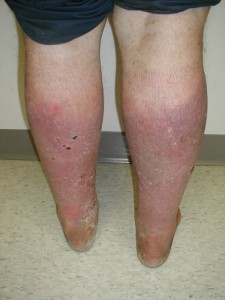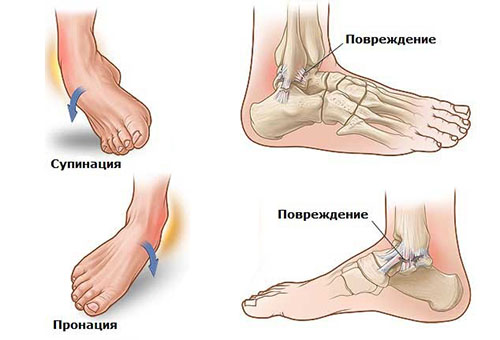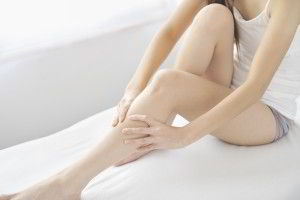When they complain of discomfort in the legs, in the area below the knee, then we are talking about the lower leg, part of the leg to the foot.
Legs hurt from knee to foot, causes and treatment
Very often, many experience leg pain with localization below the knee. They also say about such sensations that the legs are “buzzing”. In everyday hustle and bustle no one pays attention to it.
Sometimes it can be a usual overwork from long walking, physical activity or high heels. But sometimes this is a symptom of pathology, in which special treatment should be prescribed. Therefore, if the feet below the knees often hurt, then it is necessary to consult a doctor.
- large and small tibia;
- muscle (large amount);
- nerve fibers;
- vessels (venous and arterial).
Therefore, if the legs below the knees hurt, then the reasons must be sought in the anatomical elements of the leg.
If organic or functional damage occurs to these parts, the pain will be given to the lower part of the leg. Sometimes pain is not critical and not dangerous to health. But first, you need to determine exactly what caused this ailment. There are times when it can threaten a person’s life. For example, with deep vein thrombosis. Urgent treatment should be undertaken. If a thrombus formed in the lower extremities, then in the absence of its timely diagnosis, a clot may break off. This leads to obstruction of the pulmonary artery and instant death.
Therefore, it is necessary to consult a doctor with regular pain below the knee, especially if the discomfort is constant and occurs with periodic repetitions. A medical facility will diagnose and establish the causes of these symptoms. Why do legs below the knees hurt?

The main causes of pain in the legs:
- muscle tone or spasm caused by prolonged load on the legs (physical strain on the legs);
- injuries (sprains, bone fractures, ruptures of muscles or ligaments);
- inflammatory processes in the lower leg (myositis);
- atherosclerosis (plaques in arteries below the knees);
- varicose veins of the legs;
- osteoporosis;
- thrombosis of deep vessels (arteries, veins) below the knee;
- arthritis, arthrosis;
- osteomyelitis (infection of the inner part of the bones of the lower extremities);
- polyneuropathy (pathology of nerve fibers) of diabetics, chronic alcoholics and smokers;
- rheumatic diseases;
- diseases of the arteries of the lower extremities (nodular periarthritis, vasculitis);
- lymphostasis of the vessels of the leg;
- squeezing the soft tissues of the legs;
- tumors of bones, muscles, tissues below the knee (benign and malignant);
- lack of trace elements in the blood (magnesium, calcium, potassium);
- prolonged use of certain medications (glucocorticoid hormones, diuretic drugs);
- compression of nerve endings in osteochondrosis;
Varicose veins
The disease is manifested by dilated veins in the legs below the knee. But usually it becomes noticeable later, and at first the disease is masked.
Symptoms of pathology:
- feeling of heaviness in the legs;
- rare cramps are possible;
- discomfort of the legs (pain, swelling) passes after they rest in a horizontal position;
- swelling of the legs (usually at the end of the day);
- dull monotonous pain after prolonged load on the leg in an upright position.
Thrombosis of the vessels of the legs below the knee
Such pathologies develop in a short time, proceed acutely and are accompanied by pronounced external signs. The disease can be with clogged veins or arteries. These states proceed in different ways.

With venous thrombosis, symptoms develop gradually over several days. They are manifested by heaviness in the legs and bursting pain. Its localization can be both from the outside and the inner region of the leg. The leg begins to swell, redness occurs. At the site of the pathology, the temperature in the leg rises, it becomes hot to the touch. Over time, redness is replaced by a cyanotic shade. The patient’s pain is strong, it is impossible for him to step on the affected leg because of this. After three to four days, necrosis of the tissues and gangrene of the leg begins. Therefore, timely medical attention is necessary so as not to be left without a lower limb.
Arterial thrombosis develops transiently. In a couple of hours, the leg begins to go numb and get cold. Due to the lack of blood supply to the tissues, her shin color turns white. Sudden acute pain below the knee to the foot may also appear.
In the absence of first aid by doctors, within two to four hours, the leg dies due to tissue necrosis.
Deficiency of minerals (trace elements)
With a lack of any substances in the body, pain in the lower extremities may develop. The reasons for this are different. Perhaps the bones get less calcium. Symptoms include cramps in the calf muscles that occur at night. Because of this, a person wakes up, the pain does not allow him to sleep. The attack can last several minutes, then go on its own. Usually, a person begins to massage the affected area in order to alleviate his condition.
Polyneuropathy
This disease can be a consequence of exposure to diabetes mellitus, which affects not only all organs (tissues, bones), but also nerve endings. Sometimes diabetes is detected due to pain in the legs below the knees. This is characteristic of the second type of disease.
In this case, the following symptoms appear:
- burning pain in the legs;
- numbness of the legs and cold extremities syndrome;
- the pain is permanent and does not depend on physical activity and stress.
Atherosclerosis obliterans
With this disease, the main blood flow in the lower leg is disturbed due to narrowing of the lumen of the vessels. The reasons for this are atherosclerotic plaques. Because of this, the patient develops pain below the knee to the foot with intermittent claudication. Usually it is typical for long walks over long distances. After rest, the pain syndrome goes away.
If you do not take measures and the disease will progress, then the pain will intensify and appear even at rest. Trophic changes occur on the legs (ulcers occur). The skin begins to peel off, it becomes very dry. Toenails are also involved in the pathology process. This disease can also lead to the death of the limb due to tissue necrosis and gangrene.
If the leg under the knee hurts, then you should immediately consult a doctor. The specialist will prescribe the necessary examination and prescribe treatment.
Prevention of leg fatigue
To prevent tired legs syndrome, it is recommended:
- avoid wearing tight clothing (trousers, pants). This will prevent venous and lymphatic stasis in the legs;
- correction of flat feet;
- when sitting, try to avoid the “foot to foot” position, as this squeezes the blood vessels;
- when resting, it is recommended to lie on your back, lifting your legs up for 30 minutes, to improve blood supply to the lower extremities;
- stabilize body weight if it is excessive;
- control of water-salt balance;
- it is necessary to make walks;
- dilution of a sedentary lifestyle with sports and training;
- it is necessary to carry out exercises for the feet, lifting small objects from the floor;
- it’s good to walk barefoot.
Pneumopressotherapy for leg fatigue
Treatment consists of a variety of physiotherapeutic procedures. With mechanical action on the tissues of the legs below the knees, venous blood is displaced from the muscle pockets, where it can stagnate. With the help of a special apparatus, treatment is performed in the form of foot massage. At the same time, the effect on the tissues is dosed. One pneumopressotherapy procedure replaces about 30 sessions of conventional hand massage.
In addition to the therapeutic effect on the lymphatic vessels and veins, the technique has a positive effect from the point of view of cosmetology.
Electromyostimulation
This is a treatment with an apparatus that stimulates the lower leg muscles. During the procedure, the muscles begin to contract rhythmically, which contributes to the outflow of excess fluid from the soft tissues. Due to this, venous and lymphatic blood flow improves. The treatment is safe.



